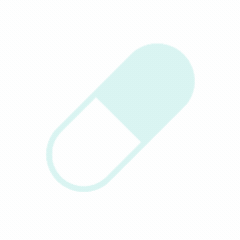Drug updated on 7/24/2025
| Dosage Form | Tablet (oral; 200 mg) |
| Drug Class | Plasma kallikrein inhibitors |
| Ongoing and Completed Studies | ClinicalTrials.gov |
Indication
- Indicated for the treatment of acute attacks of hereditary angioedema (HAE) in adult and pediatric patients aged 12 years and older.
Latest News

Summary
- This summary is based on the review of one randomized controlled trial. [1]
- Among participants aged >= 12 years with type 1 or type 2 hereditary angioedema, median time to symptom relief was 1.61 hours (interquartile range [IQR], 0.78-7.04) with the 300-mg dose and 1.79 hours (IQR, 1.02-3.79) with the 600-mg dose of sebetralstat, compared to 6.72 hours (IQR, 1.34 to >12) with placebo (P < 0.001 for 300 mg; P = 0.001 for 600 mg).
- Median time to reduction in attack severity was 9.27 hours (IQR, 1.53 to >12) with the 300-mg dose and 7.75 hours (IQR, 2.19 to >12) with the 600-mg dose, versus >12 hours (IQR, 6.23 to >12) with placebo (P = 0.004 for 300 mg; P = 0.003 for 600 mg).
- Complete attack resolution within 24 hours occurred in 42.5 % of attacks with the 300-mg dose and 49.5 % with the 600-mg dose, compared to 27.4 % with placebo (P = 0.002 for 300 mg; P < 0.001 for 600 mg).
- Sebetralstat and placebo had similar safety profiles among participants aged >= 12 years with type 1 or type 2 hereditary angioedema.
- No serious adverse events related to the trial agents were reported.
Product Monograph / Prescribing Information
| Document Title | Year | Source |
|---|---|---|
| Ekterly (sebetralstat) Prescribing Information | 2025 | KalVista Pharmaceuticals, Inc., Cambridge, MA |
Randomized Controlled Trials
| Document Title | Sex Distribution | Year | Source |
|---|---|---|---|
| Oral Sebetralstat for On-Demand Treatment of Hereditary Angioedema Attacks | 110Subjects F: 60% M: 40% | 2024 | The New England Journal of Medicine |
Sex Distribution:
F:60%
M:40%
110Subjects
Year:
2024
Source:The New England Journal of Medicine

